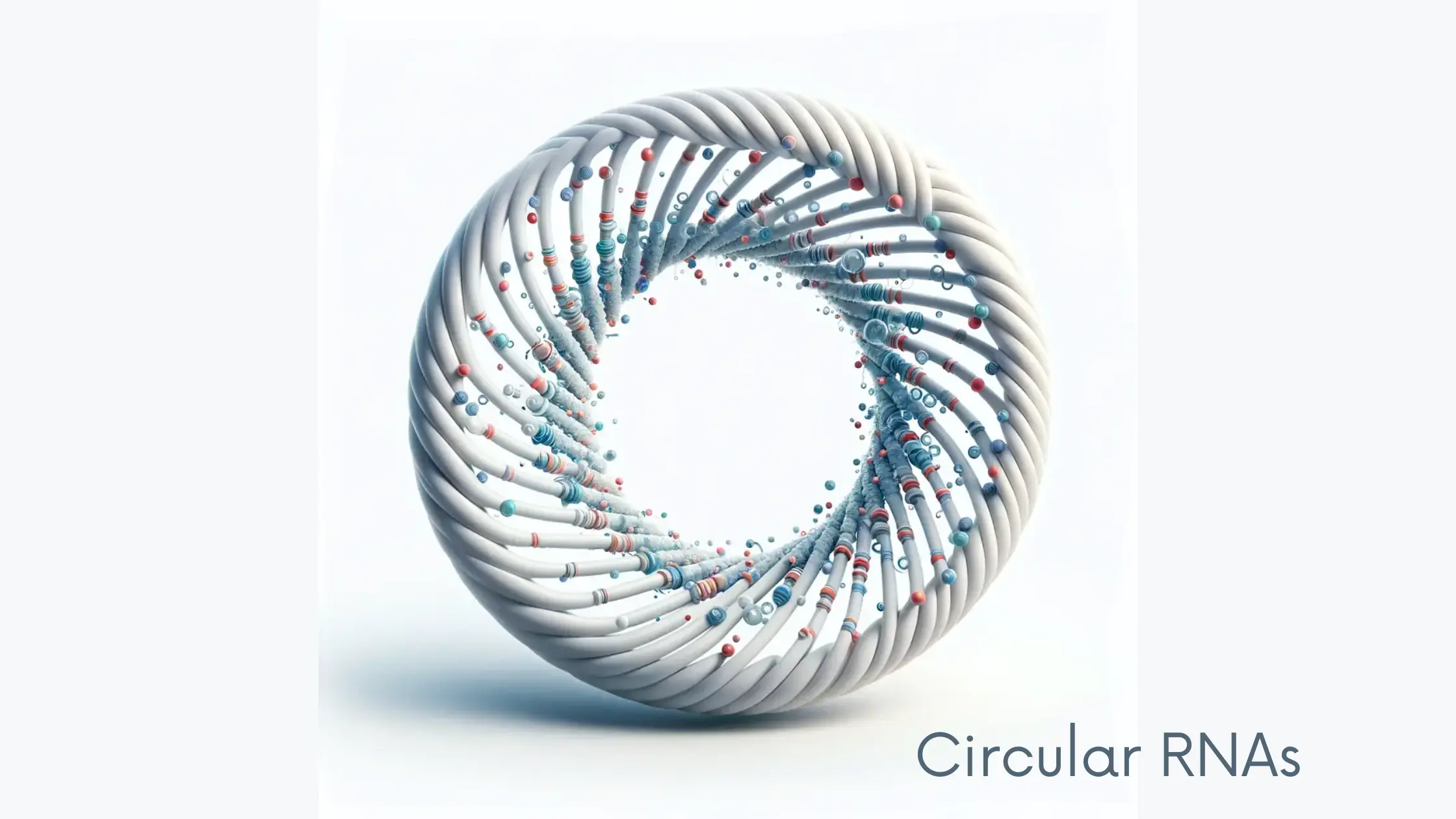

Circular RNAs: A Comprehensive Overview
Abtract
Circular RNAs (circRNAs) have emerged as a significant class of non-coding RNA molecules with diverse regulatory functions. Initially considered splicing anomalies, recent advancements in RNA sequencing and bioinformatics have unveiled their widespread presence and crucial roles in various biological processes and diseases. This report provides a comprehensive overview of circRNAs, encompassing their history, biogenesis, functional roles, association with diseases, and therapeutic potential.
Introduction
The history of circular RNAs (circRNAs) dates back to the 1970s when they were first discovered in plant viroids and later in the hepatitis delta virus. Initially, these circular RNAs were thought to be rare anomalies or by-products of aberrant RNA splicing. In the early 1990s, circular RNAs were also identified in the cytoplasm of eukaryotic cells, but their functional relevance was still unclear.
It wasn’t until the advent of high-throughput RNA sequencing and bioinformatics in the 2010s that researchers began to appreciate the widespread presence and potential significance of circRNAs in eukaryotic organisms. In 2012, a landmark study by Jeck et al. used RNA-seq data to systematically identify thousands of circRNAs in human and mouse cells, revealing their abundance and conservation across species. This study and subsequent research have shown that circRNAs are not just rare or anomalous but are a ubiquitous and important class of non-coding RNA with diverse regulatory functions.[1]
Since then, the field of circRNA research has rapidly expanded, with studies uncovering their roles in gene regulation, their potential as biomarkers for diseases, and their involvement in various physiological and pathological processes. Today, circRNAs are recognized as key players in the regulation of gene expression and are implicated in a wide range of biological functions and diseases.
Circular RNAs: An Overview
Circular RNAs (circRNAs) are a class of endogenous non-coding RNA molecules characterized by their covalently closed-loop structure. Unlike linear RNAs, circRNAs lack 5′ and 3′ ends, which makes them more stable and resistant to exonuclease degradation. They are found in various organisms, including humans, and are involved in numerous biological processes.
Biogenesis and Structure
CircRNAs are generated through a process called back-splicing, where the 5′ and 3′ ends of a single pre-mRNA molecule are joined together. This results in a circular structure that is not affected by RNA exonuclease and is more stable than linear RNA.[2]
Functional Roles
CircRNAs have diverse functions in cells. They can act as microRNA (miRNA) sponges, binding to and sequestering miRNAs, thereby regulating gene expression. They can also interact with proteins, influencing various cellular processes such as cell cycle progression and transcriptional regulation. Additionally, some circRNAs have been found to contain open reading frames (ORFs) and are capable of encoding peptides or proteins, further expanding their functional repertoire.[3]
Association with Diseases
Dysregulation of circRNAs has been linked to various diseases, including cancer, neurodegenerative disorders, and age-related diseases. For example, specific circRNAs can bind to DNA in cells and cause mutations that lead to cancer. In Parkinson’s disease, circRNAs in the human brain are tailored to neuron identity and neuropsychiatric disease, playing a role in the disease’s pathology.[4] CircRNAs are also involved in aging and age-related diseases, modulating cell senescence and the development of age-related conditions.[5]
Therapeutic Potential
Due to their stability and diverse functions, circRNAs hold potential as therapeutic targets, diagnostic biomarkers, and novel therapeutic agents. Their ability to act as microRNA sponges and regulate gene expression makes them valuable in assessing the pathology of diseases such as Alzheimer’s, depression, and other neurological disorders. The unique properties of circRNAs, such as their ability to encode proteins, further enhance their potential as biomarkers and therapeutic agents, offering promising avenues for the development of new treatments in various diseases.
Conclusion
In summary, circRNAs are emerging as important players in various biological processes and diseases, with potential applications in therapeutics. Further research into their mechanisms of action and roles in disease pathology could lead to the development of novel diagnostic and therapeutic strategies.
References
- Jeck WR, Sorrentino JA, Wang K, et al. Circular RNAs are abundant, conserved, and associated with ALU repeats. RNA. 2012;18(2):141-157.
- Memczak S, Jens M, Elefsinioti A, et al. Circular RNAs are a large class of animal RNAs with regulatory potency. Nature. 2013;495(7441):333-338.
- Hansen TB, Jensen TI, Clausen BH, et al. Natural RNA circles function as efficient microRNA sponges. Nature. 2013;495(7441):384-388.
- Lukiw WJ. Circular RNA (circRNA) in Alzheimer’s disease (AD). Front Genet. 2013;4:307.
- Cai H, Li Y, Niringiyumukiza JD, Su P, Xiang W. Circular RNA involvement in aging: An emerging player with great potential. Mech Ageing Dev.


